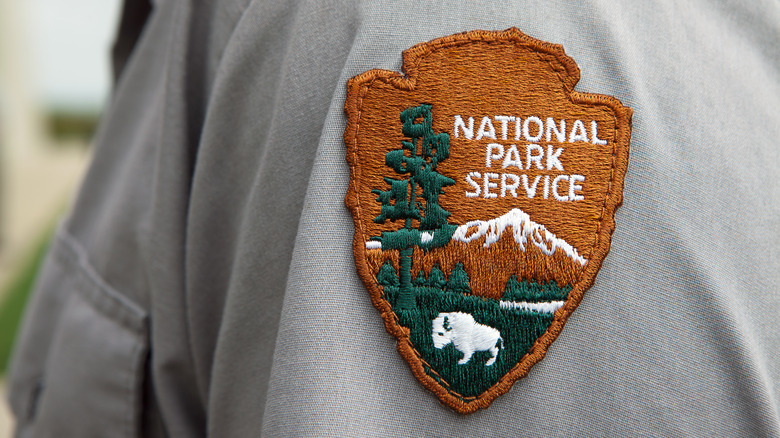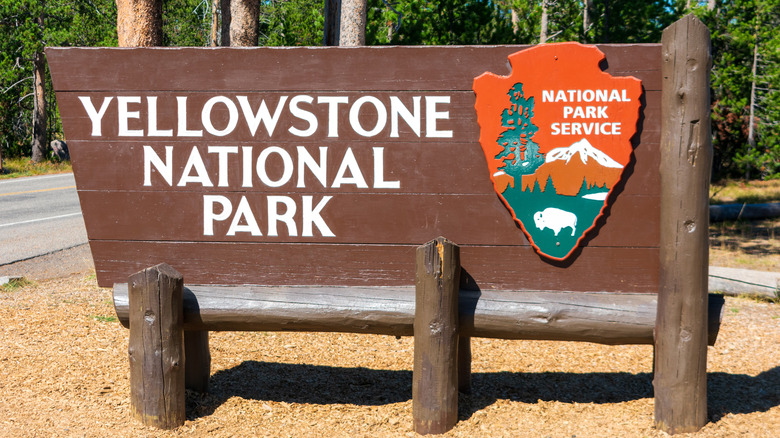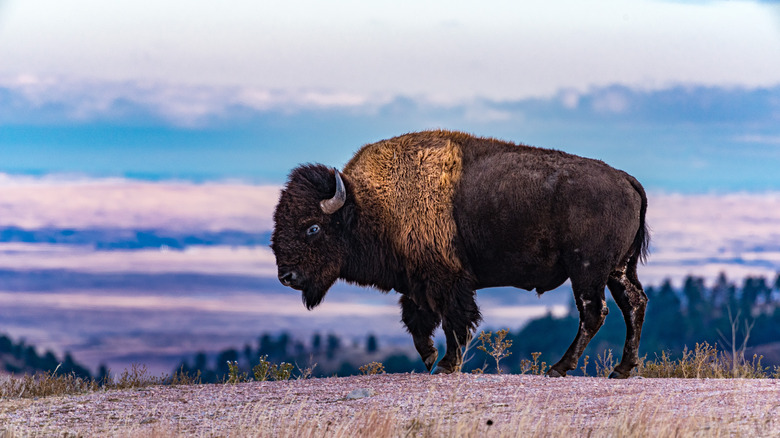The History Of The National Parks Service Emblem Explained
National Parks are a breath of fresh air from the everyday landscape most have come to know in their daily lives. These treasured zones of nature and wonder have something for everyone, from hiking and camping for outdoor enthusiasts to guided tours and viewpoints for those who want to appreciate nature without facing it head-on.
The parks are protected and carefully looked after by the National Park Service and have been since March 1, 1872, when Congress established Yellowstone National Park. According to the National Park Service, the law passed stating that Yellowstone National Park was "Hereby reserved and withdrawn from settlement, occupancy, or sale under the laws of the United States, and dedicated and set apart as a public park or pleasuring-ground for the benefit and enjoyment of the people." Now, there are over 400 areas and 84 million acres that make up the National Park System (via National Park Service).
Today, the National Park Service is well recognized by its uniforms, and the emblem branding consistently throughout every park. Like the National Park Service, the emblem took some time to become fully established as what it is today, but with care and symbolism, the easily recognizable arrowhead remains the representation of all National Parks.
There's a lot of symbolism in the arrowhead emblem
In July 1951, the arrowhead emblem that lets visitors know their in or near a National Park was authorized by the Secretary of the Interior, Oscar L. Chapman. In 1952 the emblem became the placement on the signs and documents used by the parks. Eventually, employees and rangers of the National Park Service donned the arrowhead as a patch on their uniforms (per National Parks Traveler).
The emblem is filled to the brim with symbolism representing the National Parks. According to the National Park Service, "The Sequoia tree and bison represent vegetation and wildlife, the mountains and water represent scenic and recreational values, and the arrowhead represents historical and archeological values."
The arrowhead emblem is thought to have been first used in a publication for the Oregon Caves National Monument. On March 15, 1962, the arrowhead became the official symbol of the National Park Service and is now almost instantly recognizable to millions of people in and out of the parks.
It took a few years and one written letter for the emblem to finally take form
The arrowhead wasn't the first choice for the National Park Service image. It actually took some time before the emblem became what so many know today. A Sequoia cone was the National Park Service emblem for several years before it was determined a better fit could be found. Then, in 1949, a contest for a new emblem was held. The contest winner, however, was never actually used, according to National Parks Traveler. It was when historian Aubrey V. Neasham wrote a letter suggesting an arrowhead, tree, or buffalo and included a sketch of his vision that the design we know today really took form.
The National Parks Service works tirelessly to protect and maintain some of nature's greatest wonders. While there are strict rules about what visitors can do and should never do inside a National Park, it's all done in an effort to keep the lands pristine and enjoyable for explorers while ensuring they remain protected and safe for the plants and animals that call the parks home. The arrowhead emblem is a small symbol of something much greater.


